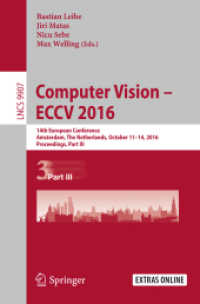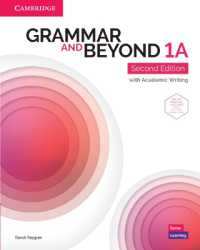- ホーム
- > 洋書
- > 英文書
- > Science / Mathematics
Full Description
This reference book sets out to provide a useful glossary to writers, reviewers and citizens interested in the EIS process. Over the last decade, environmental impact statements have devel oped a rich, but sometimes confusing vocabulary. The purpose of this book is to help people understand and communicate more effec tively by presenting, analyzing and comparing terminology used by various EIS organizations. This book is not a technical glossary or the standard glossary, but rather the first complete effort to assemble and examine the translation of complex technical EIS lan guage into a vocabulary aimed directly at the lay reader. Two major factors are responsible for the confusion over EIS terminology: the diversity of professional vocabularies and multiple interpretations of federal regulations. Due to the di versity and breadth of professional jargons needed to describe the wide range of EIS subject matter, both quantitatively and qualita tively, EIS terminology has become a complex amalgam of profession al languages. The second factor of multiple interpretations of federal regulations contributes to the confusion over EIS procedur al terminology--providing a disjointed vocabulary charged with in dividual interpretation. As a ‾esult of this complexity and con fusion, the need for a uniform or standard terminology has been advocated by many organizations, ranging from the Council on En vironmental Quality on the federal level, down to city planning departments on the local level.
Contents
Explanatory Notes.- Four Year Standardization Plan.- Comment Form.- EIS Thematic Glossaries.- General.- 1. General.- 2. Legal Jargon.- 3. Laws and Regulations.- Physical.- 4. Earth.- 5. Air.- 6. Water.- 7. Plant/Animal.- 8. Noise.- Cultural.- 9. Transportation.- 10. Energy/Utilities.- 11. Health.- 12. Recreation.- 13. Archaeology/History.- 14. Geographic Areas.- 15. Population.- 16. Housing.








